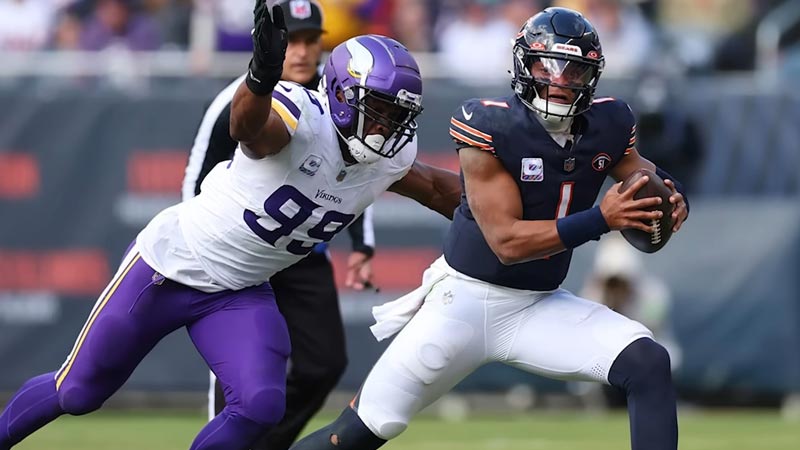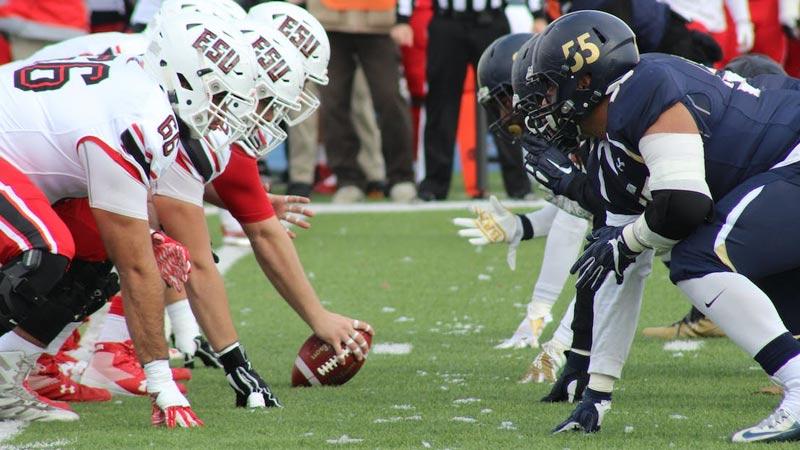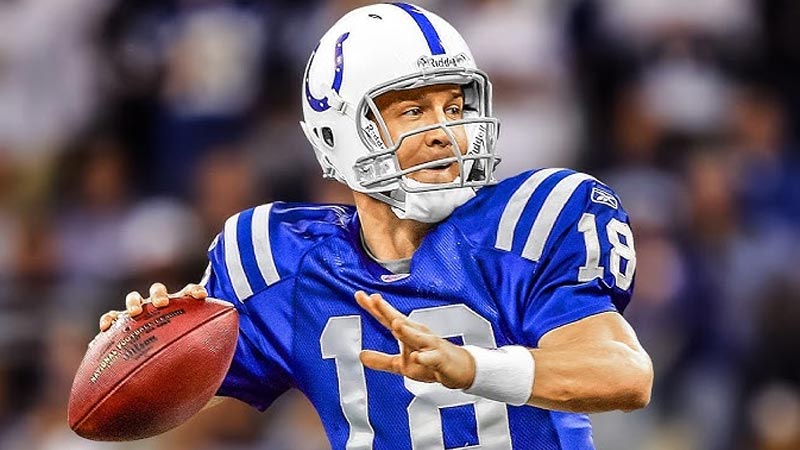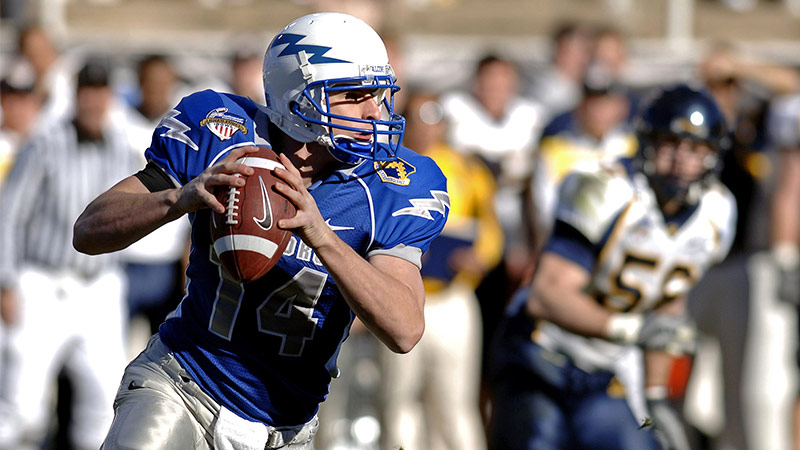In American football, cadence is the orchestrated rhythm and verbal cues used by the quarterback to initiate a play. It’s a fundamental element of the sport, orchestrating the synchronized movements of the offense while keeping the defense guessing.
The cadence commences when the quarterback lines up behind the center, and it involves a sequence of numbers or unique words, signaling when the ball should be snapped.
Cadence serves multiple strategic purposes, such as drawing the defense offside, creating a tempo advantage, and allowing for quick adjustments based on defensive alignment. It’s a vital tool that adds complexity and strategy to the game, showcasing the quarterback’s command and deception skills.
What Is Cadence in American Football?
Cadence in American football refers to the rhythmic and synchronized sequence of verbal cues and movements used by a quarterback to initiate a play. It is a crucial aspect of the sport as it helps the offense coordinate their actions and keeps the defense on their toes.
The cadence begins when the quarterback lines up behind the center and communicates with the rest of the offensive players. The primary purpose of using cadence is to gain an advantage over the defense.
Here are the key components of cadence in American football:
Snap Count

The snap count is the quarterback’s way of initiating the play. It typically starts with a series of numbers or a unique word (e.g., “hike” or “go”).
The quarterback uses this count to signal when the center should snap the ball. By varying the snap count, the quarterback can try to catch the defense off-guard, drawing them offside and gaining free play or penalty yardage.
Variability
Quarterbacks often use a varied cadence to keep the defense guessing. They may mix up the snap count’s timing, use a hard or soft cadence, and incorporate dummy counts to confuse the defense and disrupt their timing.
Silent Count
In noisy environments, such as stadiums filled with cheering fans, the offense may switch to a silent count.
Instead of using vocal cues, the quarterback uses non-verbal signals, such as tapping the center or leg movement, to initiate the snap. This prevents the defense from timing the snap based on the quarterback’s voice.
Hard Count
A hard count involves the quarterback using a sharp, loud cadence to try and draw the defense offside.
This is especially effective in critical situations, like third or fourth down, where a defensive penalty can result in a first down for the offense.
Quick Cadence
To catch the defense off-guard or prevent them from making substitutions, a quarterback might use a quick cadence, where they initiate the play almost immediately after lining up behind the center. This limits the defense’s time to prepare and react.
Freeze Cadence
A freeze cadence involves the quarterback using a deliberate pause between signals. This can help identify the defensive scheme and adjust the play accordingly. It also forces the defense to hold their positions, making it easier for the offense to recognize and exploit any weaknesses.
Cadence Variations
Cadence variations in American football are essential for quarterbacks to maintain unpredictability and control over the tempo of the game. These variations involve changes in the snap count and rhythm used by the quarterback during the pre-snap phase.
Here are some common cadence variations:
Hard Count

This variation involves the quarterback using a loud and aggressive cadence to try to draw the opposing defense offside.
By emphasizing certain words or numbers, the quarterback aims to entice defensive players to jump across the line of scrimmage, resulting in a penalty in favor of the offense.
Quick Cadence
In situations where speed is crucial, quarterbacks may employ a quick cadence, initiating the play shortly after lining up behind the center. This approach catches the defense off-guard and limits their ability to make adjustments or substitutions.
Variable Timing
Quarterbacks often vary the timing of their cadence to keep the defense guessing. They may pause briefly before calling for the snap to assess the defense’s alignment or to disrupt the rhythm of pass rushers.
Silent Count
In noisy stadium environments or to prevent the defense from timing the snap, quarterbacks can switch to a silent count. Instead of using vocal cues, they rely on non-verbal signals, such as tapping the center’s leg or a quick hand movement.
Dummy Cadence
Quarterbacks may also use dummy cadences to simulate a snap count without actually intending to snap the ball. This is done to test the defense’s reactions, potentially revealing their intentions or weaknesses.
Freeze Cadence
A freeze cadence involves a deliberate pause or extended verbal cues in the cadence. This can help identify defensive schemes, allowing the offense to adjust their play accordingly.
It can also force the defense to hold their positions, providing an opportunity for the offense to exploit gaps or mismatches.
Famous Cadence Moments in American Football
American football history is filled with memorable and famous cadence moments that have had a significant impact on the outcome of games.
These moments often showcase the skill, wit, and leadership of quarterbacks and highlight the strategic importance of cadence in the sport.
Here are a few notable examples:
Peyton Manning’s “Omaha”

Peyton Manning, one of the greatest quarterbacks in NFL history, was known for his cerebral approach to the game.
He made “Omaha” a famous part of his cadence during his time with the Denver Broncos. Manning’s use of the word “Omaha” as part of his cadence became a media sensation and left opposing defenses guessing about its meaning.
This element of unpredictability and Manning’s ability to read defenses contributed to his success.
Aaron Rodgers’ Hard Count
Aaron Rodgers, the Green Bay Packers’ star quarterback, is known for his exceptional ability to draw defenders offside with his hard count.
He often uses a hard cadence to catch the defense off-guard, resulting in free plays or penalty yardage for the Packers. Rodgers’ mastery of the hard count has become a hallmark of his playing style.
Tom Brady’s Variability
Tom Brady, widely regarded as one of the greatest quarterbacks of all time, is known for his cadence variability.
He constantly changes his snap count and rhythm, making it difficult for opposing defenses to time their rushes or anticipate the snap. This adaptability has been a key component of Brady’s success throughout his career.
Joe Montana’s “White 90”
Joe Montana, a legendary quarterback for the San Francisco 49ers, was known for his smooth and effective cadence.
He often used “White 90” as part of his snap count, which became iconic in the NFL. Montana’s cadence was known for its precision and ability to keep the defense off balance.
Drew Brees’ Quick Cadence
Drew Brees, the New Orleans Saints’ star quarterback, is known for his quick cadence, especially in the Superdome, where crowd noise can be deafening.
His ability to initiate plays rapidly caught many opposing defenses by surprise, and he used this to his advantage in numerous critical situations.
FAQS
How do defensive players try to counter a quarterback’s cadence?
Defensive players often study film to learn a quarterback’s cadence tendencies.
Can a quarterback change the cadence mid-play if the defense adjusts?
Yes, quarterbacks have the flexibility to change the cadence or audible at the line of scrimmage based on what they see from the defense.
Are there penalties for quarterbacks if they use a hard count to deceive the defense?
No, there are no penalties for quarterbacks using a hard count to deceive the defense.
Do college and high school football teams use cadence as extensively as professional teams?
Yes, cadence is an integral part of football at all levels. While the complexity and variation may differ, cadence remains a critical element in controlling the game’s tempo and confusing the defense.
Can a quarterback’s cadence change from game to game or season to season?
Yes, a quarterback’s cadence can change from game to game or season to season.
To Recap
In American football, cadence serves as both an art and a science, intricately woven into the fabric of the game.
It is the quarterback’s symphony, the conductor’s baton that orchestrates the complex movements on the gridiron. Cadence is not merely a series of numbers or words; it’s a strategic masterpiece.
From the legendary Peyton Manning’s enigmatic “Omaha” to Aaron Rodgers’ deceptive hard count, it’s a tool of finesse and deception.
Cadence is the quarterback’s language, communicating with precision and rhythm to outsmart defenses. It’s a weapon that keeps defenders on edge, drawing them offside or creating opportunities.
In the intricate dance of American football, cadence is the music that sets the stage for every play, an indispensable element in the sport’s rich tapestry.







